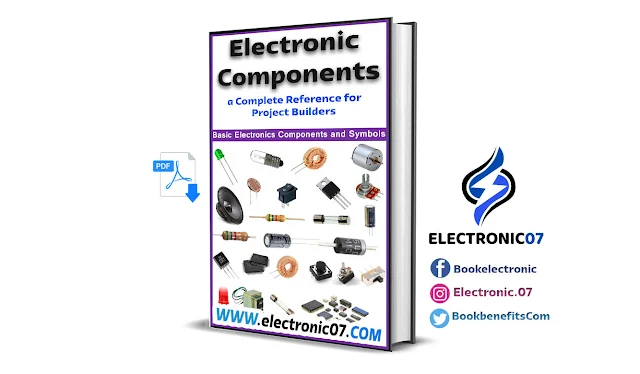Electronics: A Comprehensive Guide for Project Builders
In our modern age, electronics have become an integral part of our daily lives. They are everywhere, from the smartphones we carry in our pockets to the home appliances we utilize in our homes and level in the cars we drive. With the increasing reliance on technology, there is a growing demand to understand how natural philosophy works and how to build electronic projects.
In this article, we will search a variety of electronic components and supply a comp steer for project builders. We will delve into each component in detail and undefined how it works and how it can be used in your own electronic projects.
1. Resistors:
Resistors are one of the most basic components in electronics. They are secondhand to verify the flow of electric automobile current and reduce voltage values. They come in different values and shapes, allowing physical phenomenon engineers to use them in a variety show of applications.
2. Capacitors:
Capacitors store electrical energy and release it at a afterward time. They come in different sizes and values and are used for filtering noise, providing power to circuits, and improving the public presentation of electronic circuits.
3. structured Circuits:
Integrated circuits are a necessity for building many complex electronic systems. These circuits hold multiple integrated electronic components within an ace chip, making them easy to utilize and cost-effective.
4. Programmable Integrated Circuits:
These circuits provide greater tractability for electrical engineers as they can be programmed to perform particular functions. They are old in a wide range of applications including robotics, sensors, and control systems.
5. Diodes:
Diodes take into account electric car current to pass in only one direction, qualification them useful for directing streams and converting alternating current to direct current.
6. Transformers:
Transformers are used to change electromotive force and current from single system to another. They are based on the highest degree of power systems and are used to efficiently and cost-effectively provide power.
7. Connectors:
Connectors are used to connect electronic components conjointly and enable electric flow and data to flow between them.
8. Transistors:
Transistors are used to control electric automobile current, amplify it, and reduce it. They are essential in integer and analog electronic circuits.
With the use of this comprehensive guide, physics project builders can develop their skills and spread out their knowledge in the orbit of electronics. Whether you are a beginner in this field or a seasoned professional, sympathy these basic components wish to help you build your electronic projects with trust and efficiency.
This is an all-in-one guide to electronic component part specifications and applications. With this convenient benchtop reference, you'll have access to a comprehensive seed of realistic information on nearly every type of physics component. In "Electronic Components: A Nail Cite For Imag Builders," author Delton T. Horn provides important inside information on the working characteristics, specifications, and applications for each listed component. Horn, a renowned expert in electronics, has organized this book into three parts: passive voice non-amplifying components; active devices (semiconductor components); and general undefined (such as transducers and switches). You'll discover a wide range of topics that provide all the requisite data for successful experimentation, including electrify and solder, capacitors, diodes, linear integrated circuits (ICs), resistors, coils and transformers, transistors, and digital ICs.
Throughout the book, tusk offers valuable insights into the theory and operation of components in typical undefined designs, the advantages and disadvantages of using undefined in different situations, where and how to seed parts, and criteria for making substitutions. With this hold and a manufacturer's specification shroud in hand, you can be confident in selecting the appropriate components for your undefined designs.
Contents Of the Book:
Part 1: Passive Components
Chapter 1: Introduction to Passive Components
Overview of Passive Voice Components
Importance in electronic circuits
Distinction between passive and active components
Chapter 2: Resistors
Types of resistors (e.g., fixed, variable, surface mount)
Color steganography and respect identification
Power ratings and tolerances
Practical applications and usage guidelines
Chapter 3: Capacitors
Types of capacitors (e.g., electrolytic, ceramic, film)
Capacitance and voltage ratings
Polarized vs. non-polarized capacitors
Applications in filtering, decoupling, and timing circuits
Chapter 4: Inductors and Transformers
Role of inductors in electronic circuits
Types of inductors (e.g., air-out core, iron core, toroidal)
Inductance values and ratings
Introduction to transformers and their application
Chapter 5: Passive Filters
Introduction to filter circuits
Low-pass, high-pass, band-pass, and band-stop filters
Design considerations and filter response characteristics
Part 2: Active Components
Chapter 6: Introduction to Active Components
Overview of active voice components
Importance in electronic circuits
Distinction between active and passive voice components
Chapter 7: Diodes
Types of diodes (e.g., rectifier diodes, Zener diodes, light-emitting diodes)
Forward and turn back biasing
Characteristics and specifications
Practical applications in rectification, voltage regulation, and signal modulation
Chapter 8: Transistors
Bipolar junction transistors (BJTs) and field-effect transistors (FETs)
Operating principles and modes of operation
Common emitter, common collector, and common base configurations
Amplification, switching, and oscillation circuits
Chapter 9: structured Circuits (ICs)
Introduction to ICs and their classifications (e.g., analog, digital, mixed-signal)
Overview of linear and digital ICs
Functional blocks and internal structure
Practical applications and design considerations
Chapter 10: Programmable Integrated Circuits
Introduction to programmable ICs (e.g., programmable logic devices, microcontrollers)
Programming methodologies and languages
Applications in embedded systems, automation, and control
Information Of the Book:
Title: Electronic Components a Complete Reference for Project Builders PDF
Language: English.
Size: 22 MB
Pages: 321
Format: PDF

